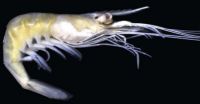(Press-News.org) ST. LOUIS-- In research published in the medical journal Brain, Saint Louis University researcher Daniela Salvemini, Ph.D. and colleagues within SLU, the National Institutes of Health (NIH) and other academic institutions have discovered a way to block a pain pathway in animal models of chronic neuropathic pain including pain caused by chemotherapeutic agents and bone cancer pain suggesting a promising new approach to pain relief.
The scientific efforts led by Salvemini, who is professor of pharmacological and physiological sciences at SLU, demonstrated that turning on a receptor in the brain and spinal cord counteracts chronic nerve pain in male and female rodents.
Activating the A3 receptor - either by its native chemical stimulator, the small molecule adenosine, or by powerful synthetic small molecule drugs invented at the NIH - prevents or reverses pain that develops slowly from nerve damage without causing analgesic tolerance or intrinsic reward (unlike opioids).
An Unmet Medical Need
Pain is an enormous problem. As an unmet medical need, pain causes suffering and comes with a multi-billion dollar societal cost. Current treatments are problematic because they cause intolerable side effects, diminish quality of life and do not sufficiently quell pain.
The most successful pharmacological approaches for the treatment of chronic pain rely on certain "pathways": circuits involving opioid, adrenergic, and calcium channels.
For the past decade, scientists have tried to take advantage of these known pathways - the series of interactions between molecular-level components that lead to pain. While adenosine had shown potential for pain-killing in humans, researchers had not yet successfully leveraged this particular pain pathway because the targeted receptors engaged many side effects.
A Key to Pain Relief
In this research, Salvemini and colleagues have demonstrated that activation of the A3 adenosine receptor subtype is key in mediating the pain relieving effects of adenosine.
"It has long been appreciated that harnessing the potent pain-killing effects of adenosine could provide a breakthrough step towards an effective treatment for chronic pain," Salvemini said. "Our findings suggest that this goal may be achieved by focusing future work on the A3AR pathway, in particular, as its activation provides robust pain reduction across several types of pain."
Researchers are excited to note that A3AR agonists are already in advanced clinical trials as anti-inflammatory and anticancer agents and show good safety profiles.
"These studies suggest that A3AR activation by highly selective small molecular weight A3AR agonists such as MRS5698 activates a pain-reducing pathway supporting the idea that we could develop A3AR agonists as possible new therapeutics to treat chronic pain," Salvemini said.
INFORMATION:
The research was funded in part by the National Cancer Institute (NCI) (RO1CA169519) and the National Institute of Diabetes & Digestive & Kidney Diseases (NIDDK) at the NIH in Bethesda, Maryland.
Established in 1836, Saint Louis University School of Medicine has the distinction of awarding the first medical degree west of the Mississippi River. The school educates physicians and biomedical scientists, conducts medical research, and provides health care on a local, national and international level. Research at the school seeks new cures and treatments in five key areas: cancer, liver disease, heart/lung disease, aging and brain disease, and infectious diseases.
About the National Institutes of Health (NIH): NIH, the nation's medical research agency, includes 27 Institutes and Centers and is a component of the U.S. Department of Health and Human Services. NIH is the primary federal agency conducting and supporting basic, clinical, and translational medical research, and is investigating the causes, treatments, and cures for both common and rare diseases. For more information about NIH and its programs, visit http://www.nih.gov.
Hamilton, ON (Nov. 26, 2014) - McMaster University researchers have found that current evidence does not support the routine use of minimally invasive surgery to remove herniated disc material pressing on the nerve root or spinal cord in the neck or lower back.
In comparing it with open surgery, they found that while minimally invasive surgery for cervical or lumbar discectomy may speed up recovery and reduce post-operative pain, it does not improve long-term function or reduce long-term extremity pain.
Minimally invasive surgery for discectomy also requires advanced ...
This news release is available in German. The human brain continuously collects information. However, we have only basic knowledge of how new experiences are converted into lasting memories. Now, an international team led by researchers of the University of Magdeburg and the German Center for Neurodegenerative Diseases (DZNE) has successfully determined the location, where memories are generated with a level of precision never achieved before. The team was able to pinpoint this location down to specific circuits of the human brain. To this end the scientists used a ...
The evolution of freshwater shrimps species living in both sides of Central America, isolated by the closure of Isthmus of Panama (3 million years ago) were studied by molecular tools. Despite the small likelihood of species crossing the Isthmus from one side to the other through the channel exist, the genetic isolation of them were maintained over the time and the separation of Pacific and Atlantic sister species still unchanged. Sister species refer to pairs of species that are genetically and morphologically closely related, but reproductively isolated.
The collection ...
A new paper, by Dr Stanley Blue, lecturer in Social Sciences at The University of Manchester, claims that there needs to be a shift in public health policy, with less focus on efforts to change individual behaviour and more attention on breaking social habits and practices that are blindly leading us into bad health.
Theories of practice and public health: understanding (un)healthy practices is published in the journal, Critical Public Health, and written by Dr Stanley Blue, lecturer at the School of Social Sciences, Prof Elizabeth Shove, of Lancaster University, Prof ...
CLEVELAND, Ohio (November 26, 2014)--Removing ovaries at hysterectomy does not increase a woman's risk of pelvic organ prolapse after menopause. In fact, removing ovaries lowers the risk of prolapse. This surprising finding from a Women's Health Initiative study was published online this week in Menopause, the journal of The North American Menopause Society (NAMS).
Whether to remove ovaries at hysterectomy for reasons other than cancer is a subject of hot debate. Removing them reduces the risk of breast cancer and dramatically reduces the risk of ovarian cancer. On the ...
For several years, it has been known that superfluid helium housed in reservoirs located next to each other acts collectively, even when the channels connecting the reservoirs are too narrow and too long to allow for substantial flow. A new theoretical model reveals that the phenomenon of mysterious communication "at a distance" between fluid reservoirs is much more common than previously thought.
Liquids in containers that are at a distance from each other may behave collectively, even if the channels connecting the reservoirs are so narrow and long that they prevent ...
Enzymes are macromolecular biological catalysists that lead most of chemical reactions in living organisms. The main focus of enzymology lies on enzymes themselves, whereas the role of water motions in mediating the biological reaction is often left aside owing to the complex molecular behavior. The groups of Martina Havenith (Cluster of Excellence RESOLV - Ruhr explores Solvation) and Irit Sagi (Weizmann Institue of Science, Israel) revised the classical enzymatic steady state theory by including long-lasting protein-water coupled motions into models of functional catalysis. ...
A study reveals how little we know about the Amazonian diversity. Aiming to resolve a scientific debate about the validity of two species of freshwater shrimp described in the first half of the last century, researchers have found that not only this species is valid, but also discovered the existence of a third unknown species. The researchers concluded that these species evolved about 10 million years ago. The study was published in the open access journal ZooKeys.
The great biodiversity in Amazonia is an issue widely studied. However, the real number of species in this ...
This news release is available in Spanish.
"Let's suppose that we need a system for monitoring vital signs in a home for the elderly; preferably a wireless system. Using the deployed standard, the sensors that will be communicating via Bluetooth are connected to each other. "The elderly individuals in the home are fitted with these sensors which are used to measure their body temperature, heart rate, etc. and to forward the data to the nursing department," pointed out Josu Etxaniz-Marañón. "Time is a critical factor in a network of this type, and ...
An international team of scientists which includes researchers from the U. of Granada has demonstrated for the first time that it is possible to establish in an objective way the level of fatigue in physicians after long shifts through their eye movement.
This research reveals that the speed of saccadic movement (mostly voluntary rapid eye movements which we use to focus our gaze upon an object that attracts our attention) is an excellent index to measure objectively the level of fatigue in the medical profession.
In an article published in Annals of Surgery (the most ...


